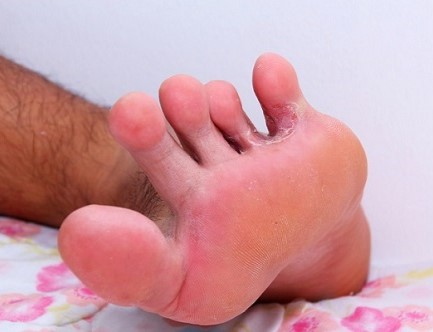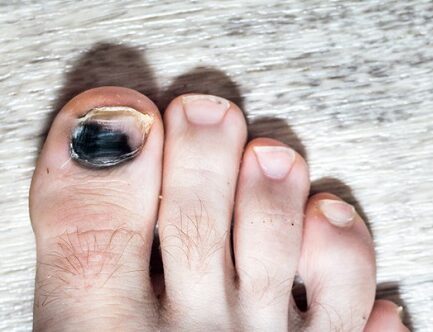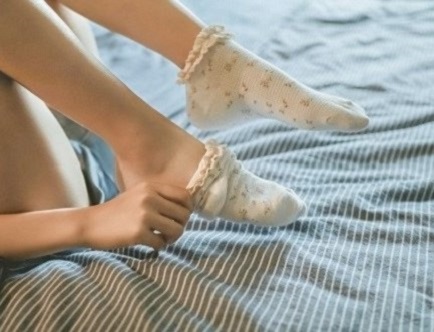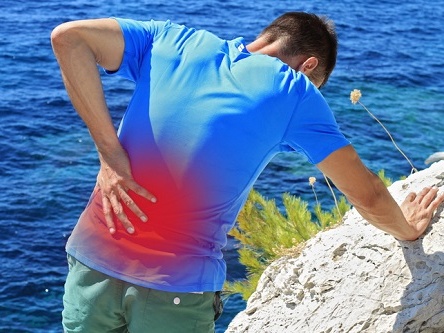Athlete’s foot, tinea, foot fungus – whatever you call it, it’s one of those conditions that’s as uncomfortable as it is common.
Despite the name, athlete’s foot doesn’t just affect athletes. Anyone can pick it up, and while it most often appears between the toes or on the soles, similar fungal infections can also show up in other areas of the body (hello, jock itch!).
But since we’re the experts in all things feet at Trevor Lane Podiatry, that’s what we’ll focus on here!

Why is it called “Athlete’s Foot?”
Athlete’s foot thrives in warm, moist environments – think sweaty shoes, damp socks, and shared change rooms. That’s why it’s often linked to athletes who spend hours training, showering at gyms, or swapping footwear on the field.
But you don’t need to run marathons or play sport to catch it. A stroll across a public pool deck or even wearing tight shoes on a humid day could be enough for the fungus to flourish.
Symptoms and How it Spreads
The signs of Athlete’s foot are hard to ignore: unbearably itchy, burning feet, a scaly rash, peeling skin, cracking between the toes, and sometimes even blisters.
The infection spreads easily through direct contact, shared towels, or contaminated surfaces.
Once you’ve had tinea, you’ll know how miserable it can be – one of our patients once joked that it made them want to “scratch their toes off while trying to sleep.” Not fun at all.
Natural Remedies for Tinea – Do they Work?
There’s plenty of advice online about natural treatments – from tea tree oil to vinegar soaks. Some of these may offer mild relief, but they rarely tackle the root cause.
Fungus is stubborn, and while keeping feet clean and dry is essential, effective treatment usually involves antifungal creams, sprays, or powders.
Left untreated, athlete’s foot can linger for months and even spread to toenails, which are much harder to treat. It could also lead to severe complications such as bacterial infections in the skin or even bone marrow, especially in immunocompromised patients.
Prevention is Key
Simple daily habits can make a big difference in keeping athlete’s foot away. We recommend you always:
- Keep feet dry – especially between the toes. Change out of damp socks quickly.
- Choose breathable footwear – leather or mesh shoes help reduce moisture build-up.
- Rotate shoes – give them at least 24 hours to fully air out before wearing again.
- Wear moisture-wicking socks – cotton or bamboo blends are better than synthetics.
- Use thongs or sandals in public showers and pools – avoid walking barefoot in communal areas.
- Don’t share towels or shoes – fungus spreads easily via fabrics.
- Wash socks in hot water – this helps kill lingering spores.
When Should You See a Podiatrist?
Most mild cases of athlete’s foot clear up with over-the-counter antifungal treatments and good foot hygiene. But it’s worth booking in with an experienced podiatrist if you notice:
- No improvement after two weeks of home treatment.
- Severe symptoms – painful cracks, blisters, or spreading rash.
- Recurring infections that keep coming back despite treatment.
- Signs it has spread to your toenails (thick, discoloured nails) or other parts of the body.
- You have diabetes or circulation problems – even minor foot infections can cause complications in people with diabetes.
How Trevor Lane Podiatry Can Help
Our experienced Redlands podiatrists won’t just hand you a cream and send you on your way. We will assess the severity of your infection, identify any contributing factors (like footwear or foot mechanics), and create a tailored treatment plan to get you the long-term relief you need. We’ll also help you with prevention strategies to stop the fungus coming back.
Experiencing Symptoms of Athlete’s Foot?
Don’t put up with the itch. Book an appointment at Trevor Lane Podiatry and let us help you put your best (fungus-free!) foot forward.

















